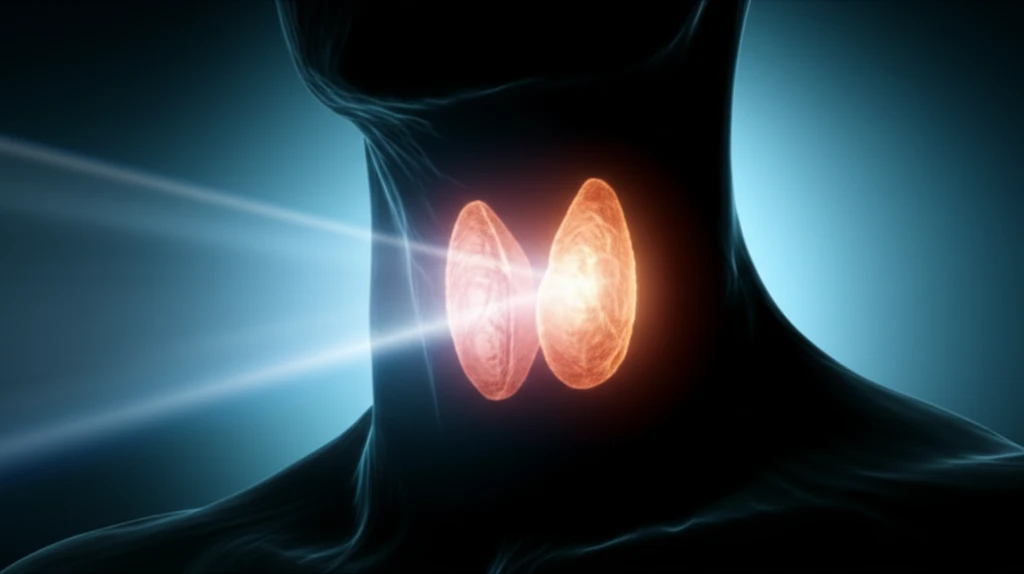
Parathyroid Cyst Mystery Solved: How Advanced Imaging Finds Hidden Causes of Hyperparathyroidism
"When standard tests fail, a new type of scan unveils a rare cause of elevated parathyroid hormone, leading to successful treatment."
Parathyroid cysts are uncommon, fluid-filled sacs near the parathyroid glands. These cysts rarely cause problems, but sometimes they lead to primary hyperparathyroidism (PHPT), a condition where the parathyroid glands produce too much parathyroid hormone (PTH). Diagnosing these cysts can be tricky because they often don't show up on standard imaging tests.
A new imaging technique, 18F-fluorocholine positron emission tomography/computerized tomography (FC-PET/CT), is showing promise in locating these hidden cysts. This scan is usually used for cancer detection, but recent research suggests it can also pinpoint overactive parathyroid glands that are missed by traditional methods.
This article explores how FC-PET/CT successfully identified a parathyroid cyst in a woman with normocalcemic PHPT (normal calcium levels but high PTH), whose condition was previously undiagnosed. This case highlights the potential of FC-PET/CT in resolving diagnostic challenges and improving patient outcomes.
The Case: Unmasking a Hidden Cyst

A 76-year-old woman with osteoporosis experienced worsening bone density despite treatment with bisphosphonates, calcium, and vitamin D. Her calcium levels were normal, but her parathyroid hormone (PTH) levels were elevated. Standard imaging, like sestaMIBI scans, failed to identify any parathyroid abnormalities, which normally indicates cause for elevated PTH.
- Initial Presentation: Worsening osteoporosis despite treatment.
- Biochemical Findings: Normal calcium, elevated PTH.
- Imaging Results: SestaMIBI scans were negative.
- FC-PET/CT Scan: Identified a lesion near the right superior parathyroid gland.
- Surgical Outcome: Removal of the lesion led to resolution of hyperparathyroidism.
A New Era in Parathyroid Imaging
This case highlights the potential of FC-PET/CT in diagnosing parathyroid cysts, especially when standard imaging techniques fail. FC-PET/CT may be useful in localizing parathyroid hyperplasia and ectopic parathyroids, often missed by traditional sestaMIBI scans. Ectopic parathyroids are glands located in unusual places, making them hard to find.
While promising, more research is needed to compare FC-PET/CT directly with sestaMIBI scans in patients with PHPT. These studies will help determine the best use of FC-PET/CT in clinical practice. Comparative study will allow researchers to identify the impact of the new technology vs the current gold standard.
FC-PET/CT offers a valuable tool for pinpointing elusive parathyroid cysts, leading to timely surgical intervention and improved outcomes. This technology helps in diagnosing the right root cause and suggest treatment plan for rare diseases or conditions.
